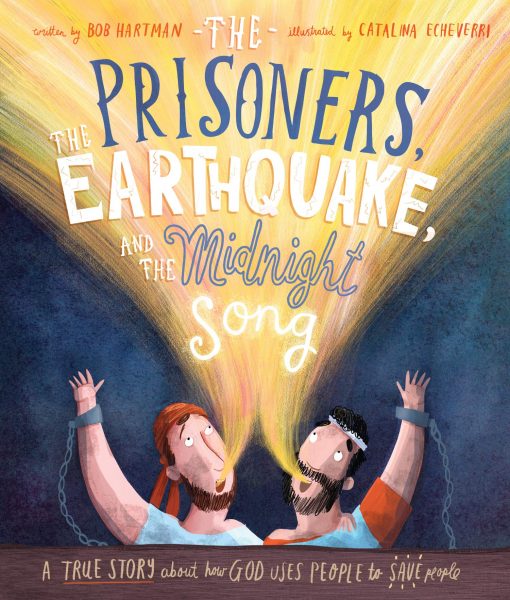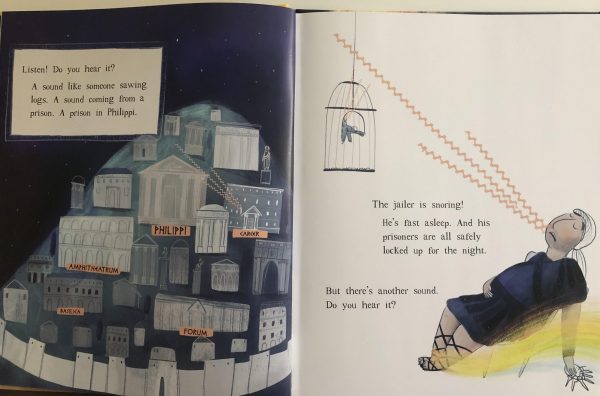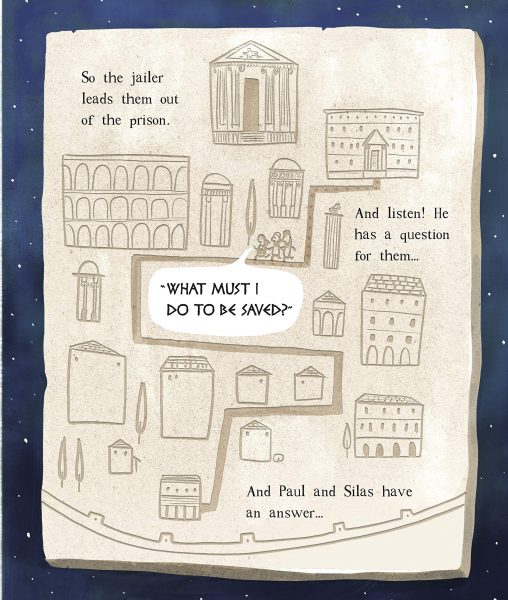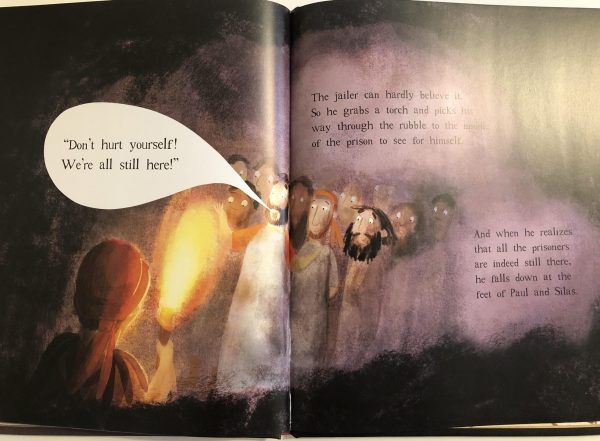Bob Hartman has a storytelling gift, and he puts it to great use to beckon children into the Bible’s account of Paul and Silas and the Philippian jailer (found in Acts 16:16-40) in this book.

And like the subtitle says, the story is about more than simply God’s power or the dedication of Paul and Silas. The goal of this book is to show children how God uses people to save people.
The Prisoners, the Earthquake, and the Midnight Song
written by Bob Hartman, illustrated by Catalina Echeverri
published by The Good Book Company (2020)
hardcover picture book, 32 pages, 9 x 0.5 x 10.5 inches
The story opens with a question, engaging kids right away. Someone’s snoring. Do you hear it?

As the story progresses, there are more sounds to “hear” and guess about. There’s a sound coming from inside the prison. It could be moaning and groaning (Paul and Silas had been beaten). It could be complaining (after all, they hadn’t done anything wrong; they had been helping a slave girl through the power of Jesus).
But listen closely. It’s singing!
Still more sounds draw children through the story: the earthquake, the jailer’s sword and his crying as he considers taking his own life (this part might be a bit much for some children), Paul’s shout to the jailer, and a very important question:

The answer includes a lovely refrain that’s repeated at several points throughout the book:
“Then they tell the jailer all about Jesus, who died so we can be forgiven, who came back from the dead so we can live forever, and who sent his Holy Spirit so we can follow him as our King.”
In illustrations, a thought balloon with symbols for each part of the refrain appear whenever the gospel is being shared.
There are more sounds to hear before the story ends: the jailer’s household singing and celebrating after being baptized, the sound of voices all around the world telling others about Jesus, and finally:
“And listen! Do you know what you can do?
You can tell people about Jesus too!”
The illustrations contrast light and dark and capture movement and mood well throughout the book.

I appreciate how the illustrations use a variety of darker skin tones for nearly all the characters. My only criticism: the slave girl in Philippi has the darkest skin, as does a modern-day woman hearing the gospel from a light-skinned friend or coworker. Using a variety of skin tones in biblical stories is more accurate and helps nonwhite children feel included, but it needs to be done with care.
Still, I recommend this book highly to help kindergarten and early elementary ages engage with the Bible story and especially with the gospel and everyone’s role in sharing it.
About My Reviews and Recommendations
Making His wonders known to the next generation,
